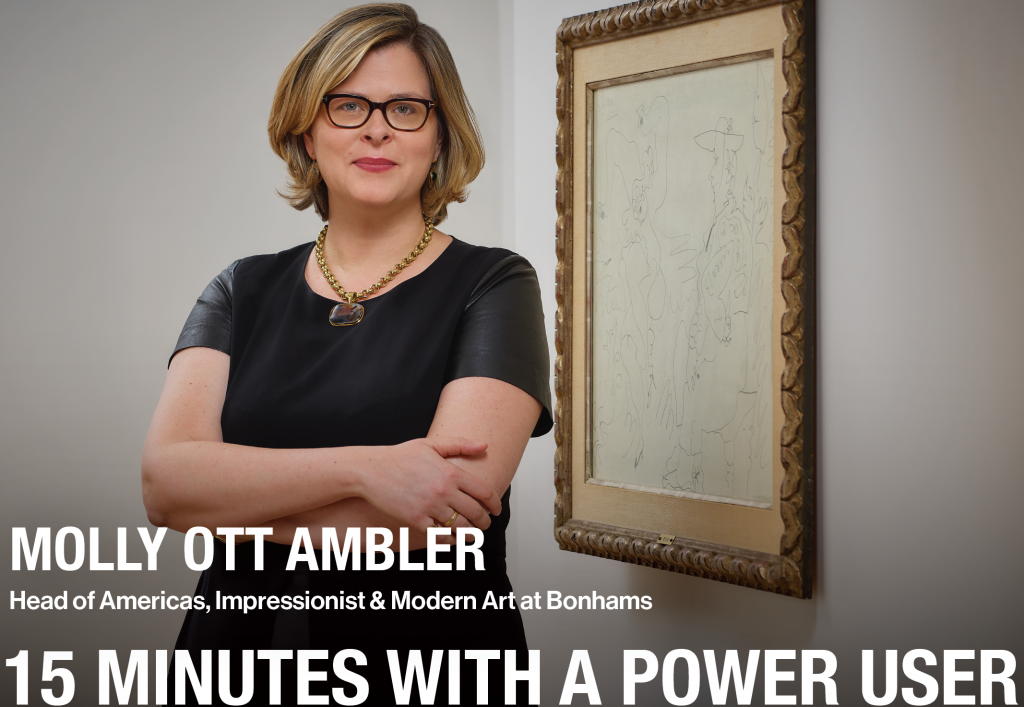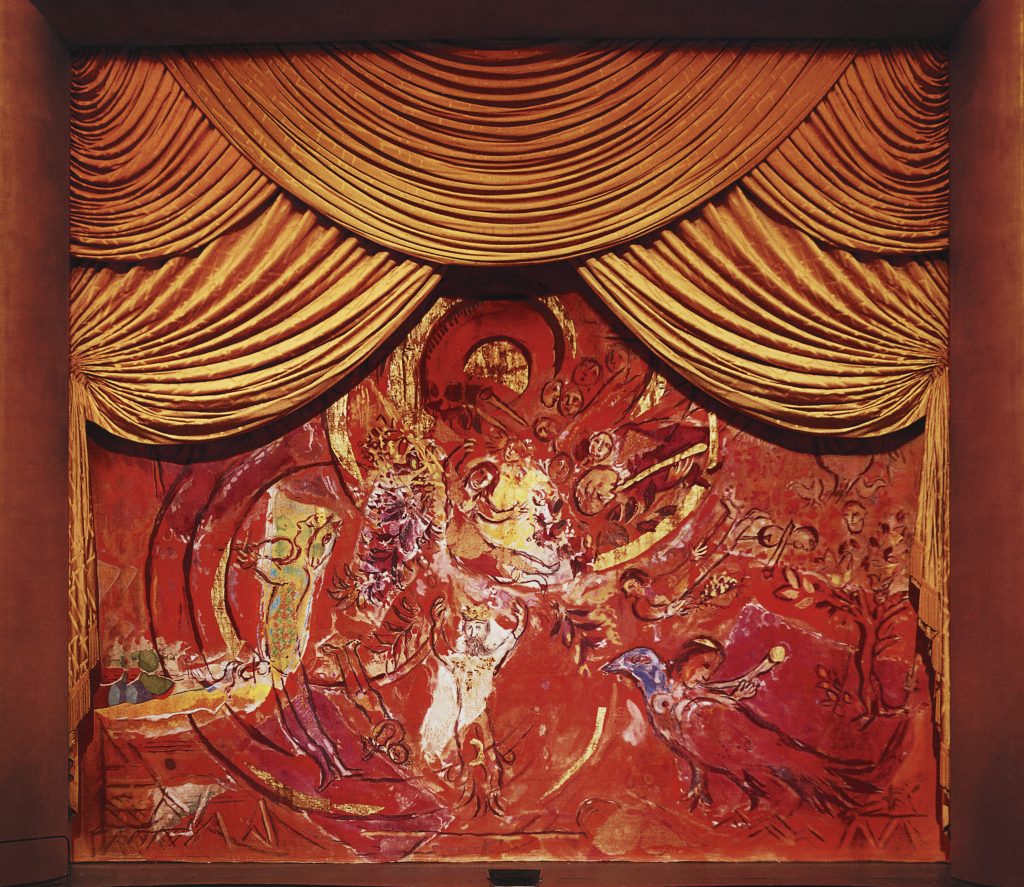People
15 Minutes With a Price Database Power User: Bonhams’s Molly Ott Ambler on a $6 Thrift-Shop Find That Sold for $925,000
The first live sale that Ambler ever attended was a livestock auction.

The first live sale that Ambler ever attended was a livestock auction.

Artnet Price Database Team

There is only one tool trusted by art-world insiders to buy, sell, and research art: the Artnet Price Database. Its users across industries—from auction houses to museums, galleries, and government institutions—represent the art world’s most important players. We’re taking 15 minutes to chat with some of the Artnet Price Database’s power users to get their take on the current state of the market and how they’re keeping up with the latest trends.
Molly Ott Ambler’s introduction to the auction world did not happen in a fine-art saleroom. In fact, the first live sale she attended was a livestock auction.
“It was amazing to hear how fast those auctioneers could talk. I found it fascinating,” Ambler says.
Now serving as the head of Americas for Impressionist and Modern art at Bonhams, Ambler works on auctions that focus on a different kind of lot—and price point. Just last week, her department sold a stage curtain created by Marc Chagall for the Metropolitan Opera’s 1967 production of Mozart’s The Magic Flute for $990,300, over an estimate of $250,000 to $450,000.
We caught up with Ambler to hear about how the Impressionist and modern art market has changed over the years.
What was your introduction to the art world?
My mother was the head of the docents and then on the acquisitions committee at the St. Louis Art Museum. Whenever we traveled as a family, we visited every kind of museum we could find, and often antique shops and galleries. It was always an education.
Over the course of your career at Sotheby’s and now at Bonhams, how have you seen the auction industry change?
When I started, most of the audience was art dealers, who bought at auction and then cleaned, framed, researched, and presented the works in their galleries at a premium. Now, we find many of our clients are private collectors who build relationships with the experts at the auction houses and their art advisors, and make their decisions more quickly in the lead up to the sales.

A stage curtain created by Marc Chagall for the Metropolitan Opera’s 1967 production of Mozart’s The Magic Flute that sold for $990,300 at Bonhams last week. Image courtesy of Bonhams.
What first piqued your interest in the Impressionist and modern sector?
The Impressionist and modern art category represents the birth of modern art, and I find the abrupt social changes that were happening around the time of these art movements fascinating. Paris itself utterly changed with the introduction of Haussmann’s wide boulevards, and the electrification of the city totally changed the subject matter for artists like Henri Toulouse-Lautrec and Edgar Degas. The advent of travel by motor and mechanization inspired the Cubists as well as the Italian Futurists. Societal change adds urgency to the aims of artists.
Are there any works you can recall working with that sold for results that surprised you?
I helped sell a portrait of an exploded Madonna by Salvador Dalí that had been abandoned at a Salvation Army Store in the East Village. The consignor had his receipt for the work, and he had paid $6 for it. The work ultimately sold for $925,000.
How would you explain to someone outside the industry what makes an outstanding Impressionist or modern work?
I love works that are strong in color and composition and that represent well the aim of the artist. Whether a special intimate view of an interior by Edouard Vuillard or a Fauve landscape of the South of France by Manguin, or a soft pastel by Edgar Degas, a subject that represents the artist at his best is what inspires my admiration.

Wassily Kandinsky’s Einige Spitzen, which sold for north of $3.2 million over a $2.5 million high estimate at Bonhams Impressionist and Modern Art sale last week. Image courtesy of Bonhams.
How have you seen the Impressionist and modern sector change?
Our market has broadened in audience. I am glad to say there is a global group of buyers who seek the best examples by Claude Monet, Pablo Picasso, and so many others. I would also say that collectors of post-war art are starting to look backwards, engaging with the Surrealists and modern artists like Joan Miró and Fernand Léger, and finding our prices very approachable.
What are some of your predictions for the Impressionist and modern collecting category over the next 10 years?
Our challenge continues to be that there is not enough material for the demand. When an amazing estate reaches the market, there is good appetite from a large audience. But as estate material is few and far between, the market is driven by the demand for fresh and high-quality examples, whether Impressionist, Pont-Aven, Fauve, Nabis, Surrealist, works by Picasso across his many decades of production, or the many other schools within this broad and fascinating category.
What was the last thing you searched for in the Price Database?
Salvador Dalí oils of the 1930s.